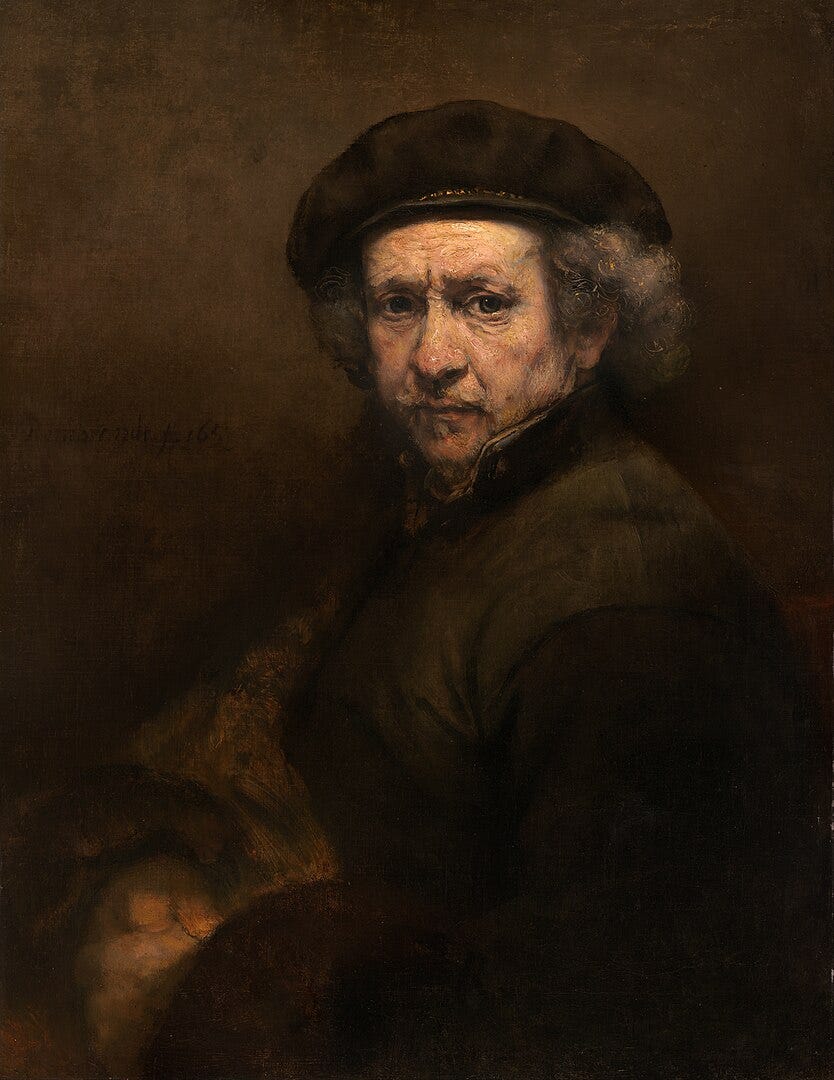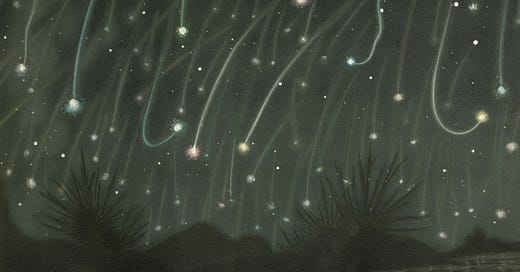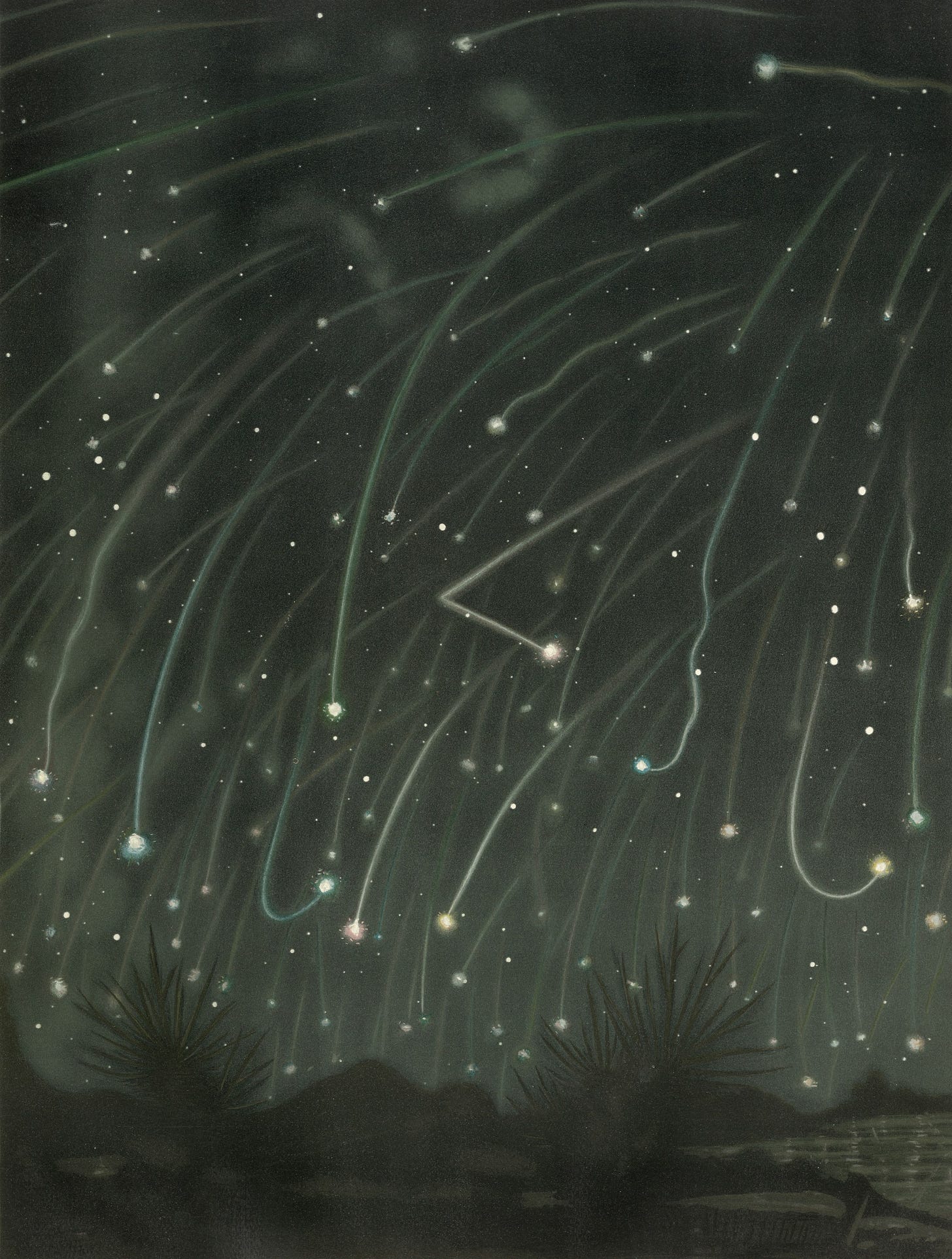Recently, I was reminded that most of our words don’t represent real things but rather loose collections of phenomena that burst apart under the slightest pressure. What is weather? A range of atmospheric events that affect life down below. Yet I wouldn’t call a rainbow weather no matter how many of us pause to admire its delicate arc. What is a chair? A piece of furniture made for sitting on. But if I stare at Joseph Kosuth’s Three Chairs for any length of time, or walk through the local reuse store asking myself “chair?” “stool?” “bench?” I quickly get tangled up.
Or lately everyone’s talking about inflation, but what they mean by that is fluid, an average of prices going up on some things in some places, but which things and in which places is harder to say. The price of ground beef at my local grocery store, yes, the price of eggs, a little, the price of coffee, no. I know I’m being difficult. It’s easy to live fully and well without thinking about the inherent reality of chairs, or inflation, or weather.
But I’ve always had days where my body feels like a word stretched thin over a loose collection of phenomena called myself: one minute elated at the sunlight so red on the roses my daughter brought home, one minute despairing that it’s already noon, one minute furious at the mud on my kitchen floor, another giggling like a maniac at the sound of “frippery.” Such a silly word for a silly thing, “frippery.”
Even at a wider frame, I’m more changeable than the weather: one month I’m a disciplined writer at my desk every morning to do work that’s not my job, the next I’m so flighty my laundry never leaves the hamper.
As a child, I could stun myself to absolute paralysis by remembering I was a conscious being. Sometimes the thought still catches me off guard, sweeping me up in the chill wind of terror: the thing I call “myself” is a voice I hear inside my skull. Except not a “voice,” because that implies sound from someone’s throat. And not “hear” either. And not “inside” my skull exactly, because while I know the location of my brain from the biology textbooks, who’s to say that’s really where I don’t-hear the not-voice. And if the not-voice is me then who is it not-hearing the not-voice. Also me? And what, again, is a chair? And is defining chair just a first step before all the bigger, more important things we can’t define: love, death, courage, human. I spin out.
This morning, I read about a small exoplanet about 140 light years from Earth. It orbits so close to its home star that its surface burns at 160,000 degrees Celsius, its rocks liquifying to magma as it whips around and around. A year on this planet lasts barely thirty hours, and because it is so small, it’s gravity is too weak to hold itself together. With each careening, boiling orbit, it leaves about one Mount Everest of itself behind, an evaporating smear over five miles long streaming through space. Within a million years or so, it will disintegrate into nothingness, its planet-stuff scattered over vast distances as its star carries on.
These days, my center of gravity doesn’t seem strong enough either. Sometimes I fear I’ll smear myself to nothingness all too soon.
So what is it that holds us together?
The early twentieth century writer Simone Weil believed that geometry was sacred. To her, the human body was “nothing but a point in time and space,” and yet that body could feed the hungry and care for the sick. Like the points of a triangle, each individual meant nothing on her own, only in her inevitable relationships to other beings and her God. Recognizing those relationships—that humming, invisible geometry—was the most important step in living a moral life. Once we saw those lines and angles, correct action did not need a pros and cons list, it didn’t need theories. It happened as automatically as giving water to man dying of thirst.
Similarly, her contemporary Martin Buber, thought that God was not an entity but a relationship. He believed that when we truly beheld another being in their vast, unnamable uniqueness, we experienced the divine. Like language, true meaning existed not in an individual person or word, but in the relationships between them.
For so long I tried to live my life untethered. Untethered by work, by family, by mortgage, by nine-to-five. But these days, the more I feel untethered the more I feel unreal, a single point in a vastness of space. Without my classes to teach, my children to clean up after, my husband to call, my friends to text back, I am driven back on myself, myself, myself, which maybe means nothing after all.
Even these words I’m typing are a tether of sorts, binding my future self to this one at the desk, binding you, dear stranger, to me. With each pressed key, I pull us toward each other, or try to. Gravity is just a relationship among so many atoms.
By the end of his life, the painter Rembrandt had outlived many of the forces holding him together. His long-time lover, Hendrickje, with whom he’d shared two decades of his life, died in 1663, not even forty years old. His son, Titus, who had been his public advocate and champion, died a few years later of bubonic plague, two weeks before his twenty-seventh birthday. Both Hendrickje and Titus had often served as Rembrandt’s subjects, their faces peering from his canvases as saints and Biblical figures. After their death, the painter lived on, and amid these lonely later years, he completed many self portraits. They are stunning—some of the most heart-rending depictions of the human soul leaking desperately out through its mask. But many art critics speculate that Rembrandt didn’t paint them because he was particularly drawn to self portraiture as a form. In the last years of his life, he was deeply in debt and harried by creditors. Hiring sitters to pose took money he didn’t have. He painted himself because he was the cheapest and most readily available subject, because he was alone. Now those brush-stroke eyes bind me to him across the centuries, a thrumming connection reaching out to me from an unfathomable distance.

Book recommendations for when you are falling apart:
If you’re looking for a quiet, thoughtful novel about the strangeness of being human, read W. G. Sebald’s Rings of Saturn. I turn to Sebald often when I’m feeling fragile, because I think he understood how tenuous and uncertain being human can feel. In this particular book, his narrator takes a walking tour of the British coast amid a bout of depression. Along the way, he sees strange things and meets strange people, reflecting on how we go on living among so much fluctuating absurdity. Sebald gets it.
If you’re looking for a lyric memoir that captures the strangeness of time and how much things can change, read Li-Young Lee’s The Winged Seed. I’m sort of obsessed with this book. A poet by trade, Lee brings all his skill with language to bear in his heart-breaking account of his family’s flight from China after the communist revolution. However, this book is not about politics or history, but rather a deep, philosophical meditation on life, death, and impermanence.
If you want to think about all these questions but in a beautifully simple, tender way, read The Boy, The Mole, The Fox, and The Horse. It’s a children’s book yes, but in the same way that The Little Prince is a children’s book, the sort that adults get obsessed with and return to for its heart and wisdom. Also the illustrations are beautiful.






So damn good, per usual